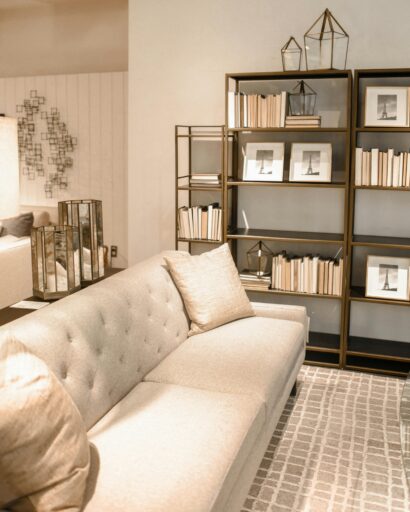Whether it’s the hue of your clothing, rucksack, handbag or even the shades within your living space, comprehending which color scheme aligns with your personality is paramount. The colors you choose for your belongings, particularly your bedroom profoundly influence your emotions and overall well-being.
Moreover, your bedroom serves as your personal sanctuary, a serene retreat where you can relax and rejuvenate after a demanding day. Hence, selecting the ideal color palette is fundamental in creating a soothing and inviting ambiance.
This blog will delve into the art of selecting the perfect color palette for your bedroom, delving into the realm of color psychology to assist you in making the most favorable choices.
Calming Colors for a Peaceful Retreat
When it comes to your bedroom, creating a tranquil and restful atmosphere is essential. Soothing and calming colors like soft blues, gentle greens and muted lavender are ideal.
These colors have been found to reduce stress, lower blood pressure and promote relaxation. Light shades of these colors are perfect for walls, while you can use slightly darker or more vibrant shades for accents and decor.
Warm Colors for a Cozy Ambiance
If you prefer a cozier and more intimate feel in your bedroom, warm colors like soft yellows, warm taupe and earthy neutrals are excellent options.
These colors can create a feeling of ease and security, making your bedroom a welcoming retreat. Warm colors can be incorporated through bedding, curtains or decorative elements.
Energizing Colors for a Positive Start
Some people prefer their bedroom to be a space that energizes and invigorates them in the morning. In such cases, shades of coral, sunny yellow or even a soft, refreshing orange can be used strategically.
These colors can help you start your day on a positive note but should be balanced with more soothing tones to ensure a restful night’s sleep.
Creating Harmony in Your Color Palette
When choosing a paint palette for your bedroom, it’s crucial to maintain a sense of harmony. You can achieve this by combining primary and secondary colors within the same family. For instance, if you opt for a calming blue palette, you can incorporate various shades of blue and complementary colors like pale gray, soft white or muted seafoam green. This balance allows your room to feel more varied and manageable.
Remember that lighting can also impact how colors appear in your bedroom. Natural light and artificial lighting sources can affect the perceived color of your walls and decor. Testing paint samples and fabric swatches under different lighting conditions is advisable to ensure your chosen colors maintain their desired effect.
Final Note
Selecting the right color palette for your bedroom involves careful consideration of color psychology and your personal preferences.
Whether you aim to create a serene oasis, a cozy retreat, an energizing space or an elegant haven, the colors you choose can make a significant difference in how you feel within the confines of your bedroom









